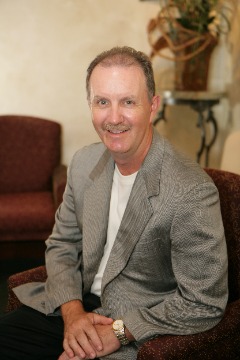Best Charlotte rhinoplasty surgeons have the skills to manage surgery
The best Charlotte rhinoplasty surgeons can help you manage risks. Rhinoplasty, commonly known as a nose job, is a surgical procedure that can enhance the aesthetic appearance and functionality of the nose. While it is a popular and generally safe procedure, like any surgery, it carries certain risks. Three common risks associated with rhinoplasty include bleeding, infection, and a bad reaction to anesthesia. In this article, we will delve into each of these risks and explore how expert surgeons manage and mitigate them.
Bleeding
Bleeding is a common concern during and after rhinoplasty. The nose is a highly vascular organ, meaning it has many blood vessels. During the surgery, a skilled surgeon must make precise incisions, reshape the nose, and possibly remove or alter the nasal structures. These actions can lead to bleeding. To address this risk, expert surgeons employ several strategies:
- Hemostasis Techniques: Surgeons use specialized instruments to control bleeding. They may apply pressure, use cautery (heat), or utilize topical hemostatic agents to stop bleeding from small blood vessels.
- Proper Incision Techniques: Skilled surgeons make meticulous incisions, which minimize damage to blood vessels, reducing the risk of excessive bleeding.
- Post-Operative Care: After surgery, patients are carefully monitored to ensure there is no abnormal bleeding. Surgeons may use nasal packing or other materials to control bleeding if necessary.
- Patient Education: Surgeons inform patients about the risk of bleeding, how to avoid exacerbating it, and when to seek immediate medical attention.
Infection
Infection is a potential risk associated with any surgical procedure. The nasal area is no exception. To minimize the risk of infection, expert surgeons take the following measures:
- Sterile Environment: Surgical facilities are maintained under strict sterile conditions to minimize the risk of infection.
- Preoperative Antibiotics: Patients may receive prophylactic antibiotics before the surgery to prevent infection.
- Proper Wound Care: Surgeons and patients must follow stringent wound care protocols to prevent infection. This includes keeping the surgical site clean and avoiding touching the area with unclean hands.
- Monitoring: Patients are closely monitored after surgery for any signs of infection, such as increased redness, swelling, or discharge.
- Patient Education: Patients are educated on how to care for their incisions, including cleaning, dressing changes, and the signs of infection to watch for.
Anesthesia Reactions
Anesthesia is an essential component of rhinoplasty, but it does carry a risk of adverse reactions. Expert surgeons work with experienced anesthesiologists to minimize this risk:
- Thorough Medical Evaluation: Before surgery, patients undergo a comprehensive medical evaluation to identify any potential contraindications to anesthesia.
- Anesthesia Team: An experienced anesthesia team is crucial in ensuring the patient’s safety. They carefully monitor vital signs and adjust anesthesia levels as needed throughout the procedure.
- Patient Communication: Patients are encouraged to disclose any previous reactions to anesthesia and discuss their concerns with the anesthesiologist.
- Emergency Preparedness: Surgical facilities are equipped to manage any unexpected complications, including adverse reactions to anesthesia.
- Postoperative Monitoring: After surgery, patients are closely monitored as they recover from anesthesia to address any lingering effects.
Rhinoplasty is a transformative surgical procedure that can help patients achieve the desired look and improve their quality of life. While it carries certain risks, expert surgeons take numerous precautions to address and manage these risks effectively. Patients considering rhinoplasty should choose a board-certified plastic surgeon with experience and a commitment to safety, ensuring the best possible outcome.
Rhinoplasty, while a generally safe procedure, does come with certain inherent risks, including bleeding, infection, and potential reactions to anesthesia. However, the expertise and experience of the surgeon play a crucial role in managing and mitigating these risks. Patients should always prioritize safety when considering rhinoplasty.
Choosing a board-certified plastic surgeon with a proven track record in rhinoplasty is a vital step in ensuring a successful and safe procedure. Here are some additional tips for patients:
- Research Surgeons: Take the time to research potential surgeons. Read reviews, ask for referrals, and review before-and-after photos to get a sense of their skills and results.
- Consultations: Schedule consultations with multiple surgeons to discuss your goals, concerns, and the surgical approach they recommend. This allows you to find a surgeon with whom you are comfortable.
- Ask Questions: Don’t hesitate to ask your surgeon about their experience, qualifications, and the specific techniques they plan to use during your rhinoplasty. Open communication is key.
- Follow Pre-Operative Instructions: Carefully follow any instructions provided by your surgeon, such as discontinuing certain medications and refraining from smoking before the surgery.
- Understand Risks: Ensure you have a clear understanding of the potential risks and complications associated with rhinoplasty. This knowledge will help you make informed decisions and manage expectations.
- Recovery and Postoperative Care: Be prepared for the recovery period and follow all postoperative instructions. Proper care and compliance with recommendations can greatly reduce the risk of complications.
- Regular Follow-Up: Attend all follow-up appointments with your surgeon to monitor your progress and address any concerns or complications promptly.
While rhinoplasty is a transformative procedure that can enhance your appearance and self-esteem, it’s essential to prioritize safety throughout the entire process. Expert surgeons are well-equipped to manage and mitigate common risks, but patients also play a crucial role in ensuring a successful outcome by following preoperative and postoperative guidelines diligently.
In summary, rhinoplasty, like any surgery, carries risks that can be effectively managed by experienced surgeons. By selecting a reputable and skilled surgeon, following proper pre-and post-operative care, and maintaining open communication, you can increase your chances of achieving your desired results safely and with minimal complications.
Visit The Best Charlotte rhinoplasty surgeons
Contact Dr. Sean Freeman at Only Faces, Charlotte’s most experienced rhinoplasty surgeon and top facial plastic surgeon, to schedule a consultation to find out what procedure is right for you. Call today.

